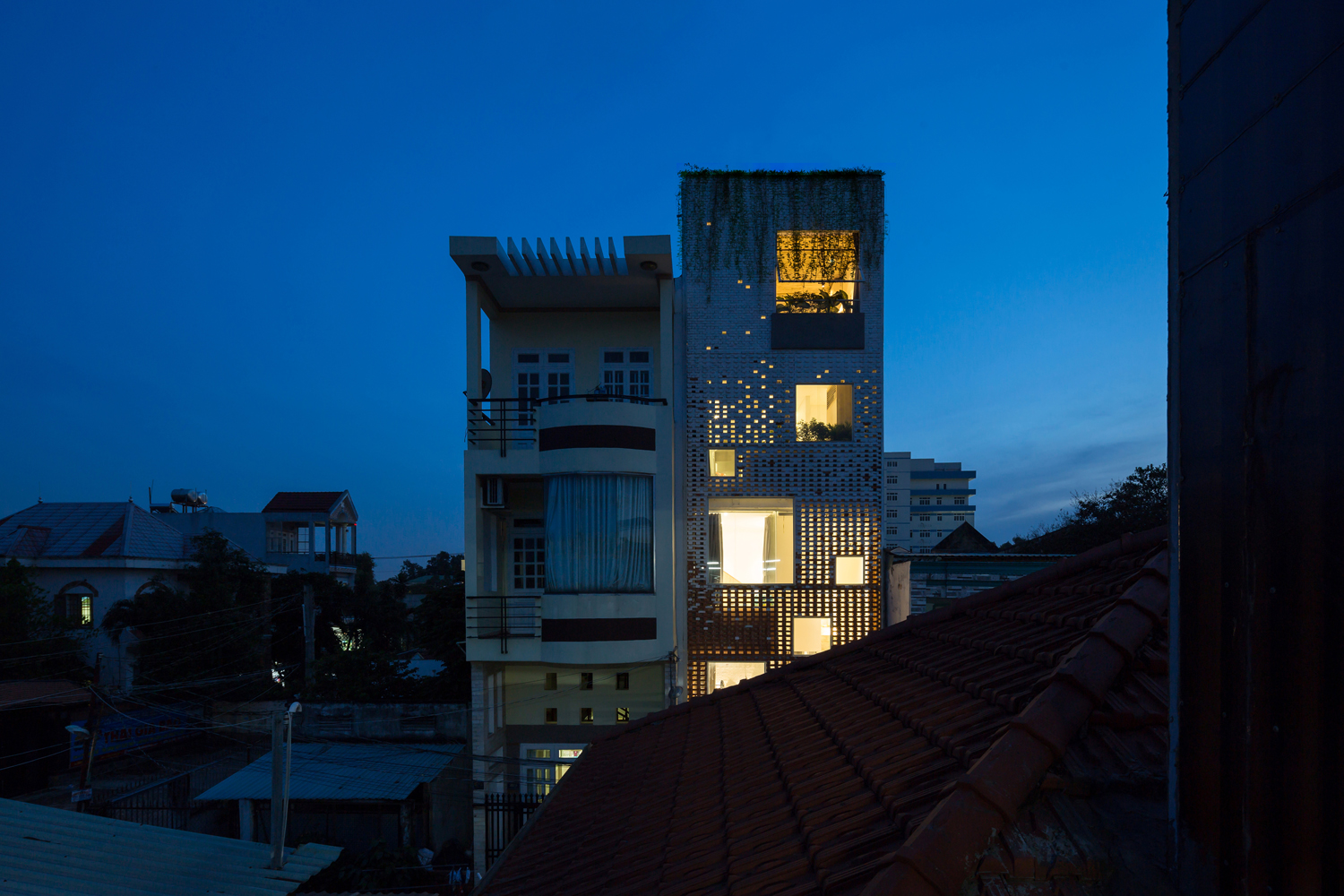
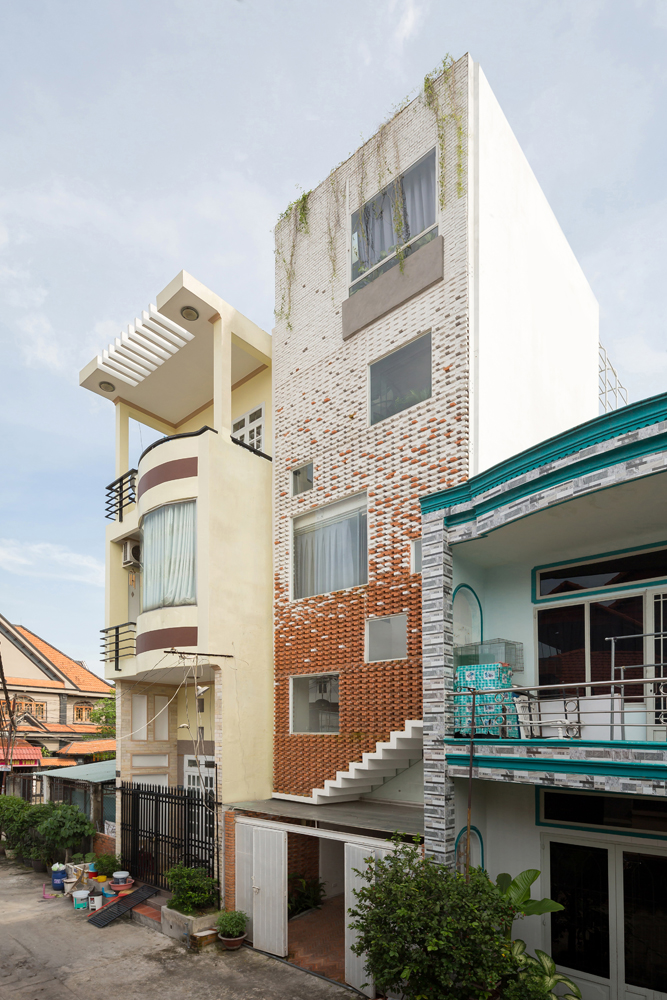
Boundary House는 베트남 Binh Duong의 공업 단지에 인접한 협소주택이다. 공업 단지 주변의 주거 공간이 흔히 그렇듯 이곳 역시 하루 종일 유동 인구가 많아 불필요한 시선에 노출되기 쉽고, 소음도 심한 편이다. 설계 초기 단계에서 건축가는 이런 단점을 극복하기 위해 도로에 면하는 주택의 전면에 높은 담벼락을 세워 주변 환경으로부터 완전히 차단하고, 실내 공간에서의 삶의 질을 향상시키는 데에 주안점을 두고자 했다. 그러나 이런 방식은 3대가 함께 사는 클라이언트 가족의 성향과 맞지 않았다. 가족은 오랫동안 골목의 이웃들과 함께 웃고 울며 끈끈한 유대관계를 유지해왔기 때문이다.
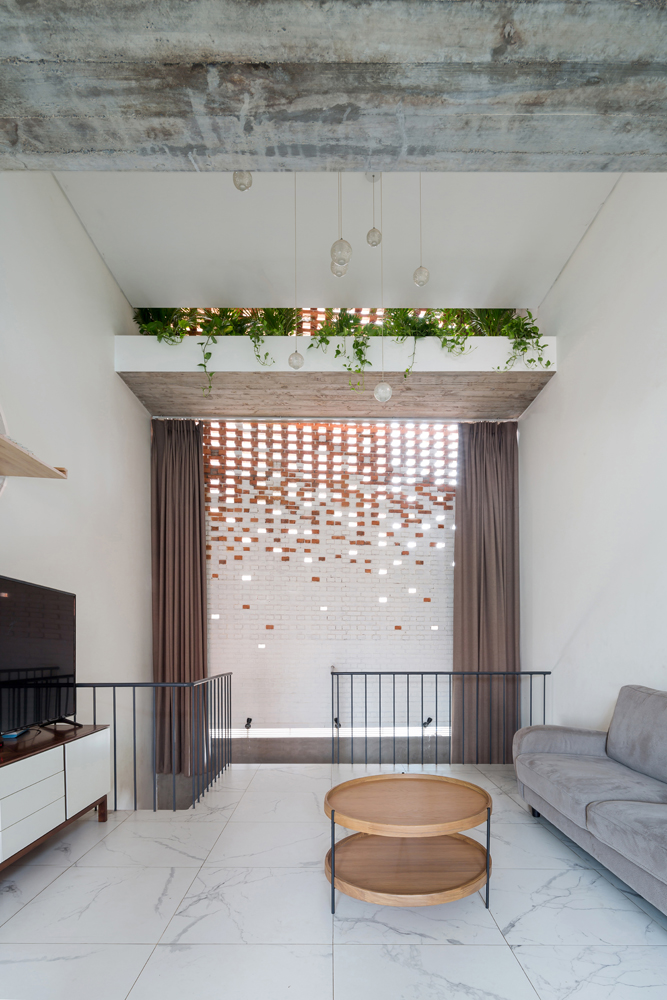
There is a trade-off between Binh Duong's industrial development and its bad air quality, noise pollution, heavy traffic congestion and many other problems, which strongly impacting the quality of living environment. The construction site locates among three large industrial parks. Under such general disadvantages coming from the context, at first the initial design plan aims to seclude this house from surroundings, focusing only on improving the inside living environment quality. This solution, however, was against this 3-generation family members’ tendency of extroversion, who have long had a strong connection with this alley’s community. Our keyword is “The Boundary” The vertical boundary outlined the partition between interior space and the outside one. Instead of the original idea about the façade - completely closed as a straight, solid wall – it was later developed into a semi-space limited by a solid-and-void “curtain” wall and inner room’s walls.
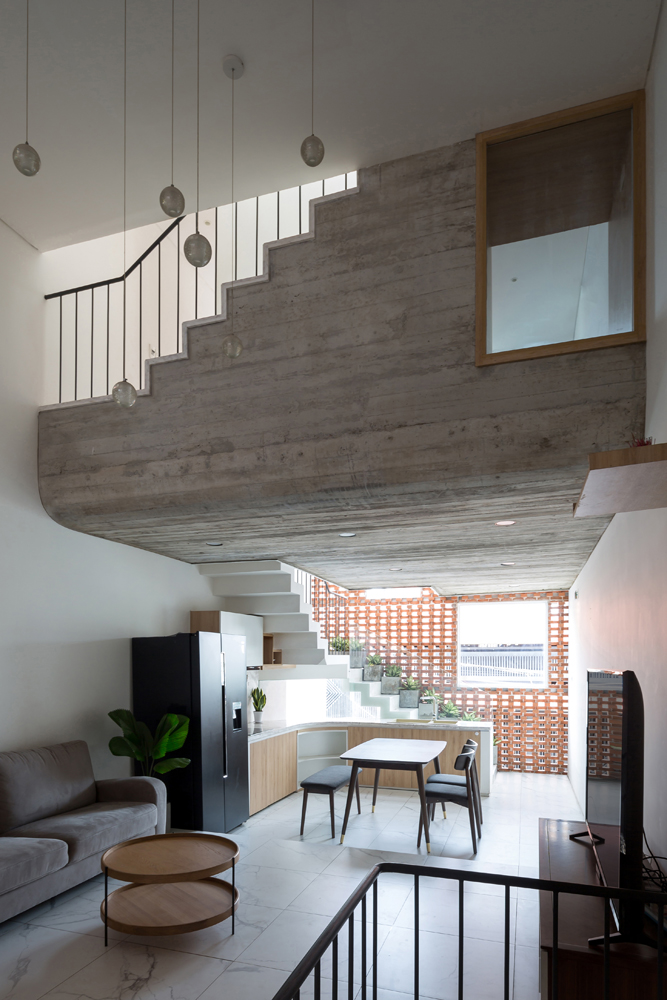
These room walls work as the second layer of façade, together with greenery and stairs put in between the two, all those have created a transitional buffer zone. This combination forms a double skin structure, minimizing adverse environmental impacts while ensuring effective ventilation, day-lighting, and especially preserving the interaction between the building and the frontward alley.
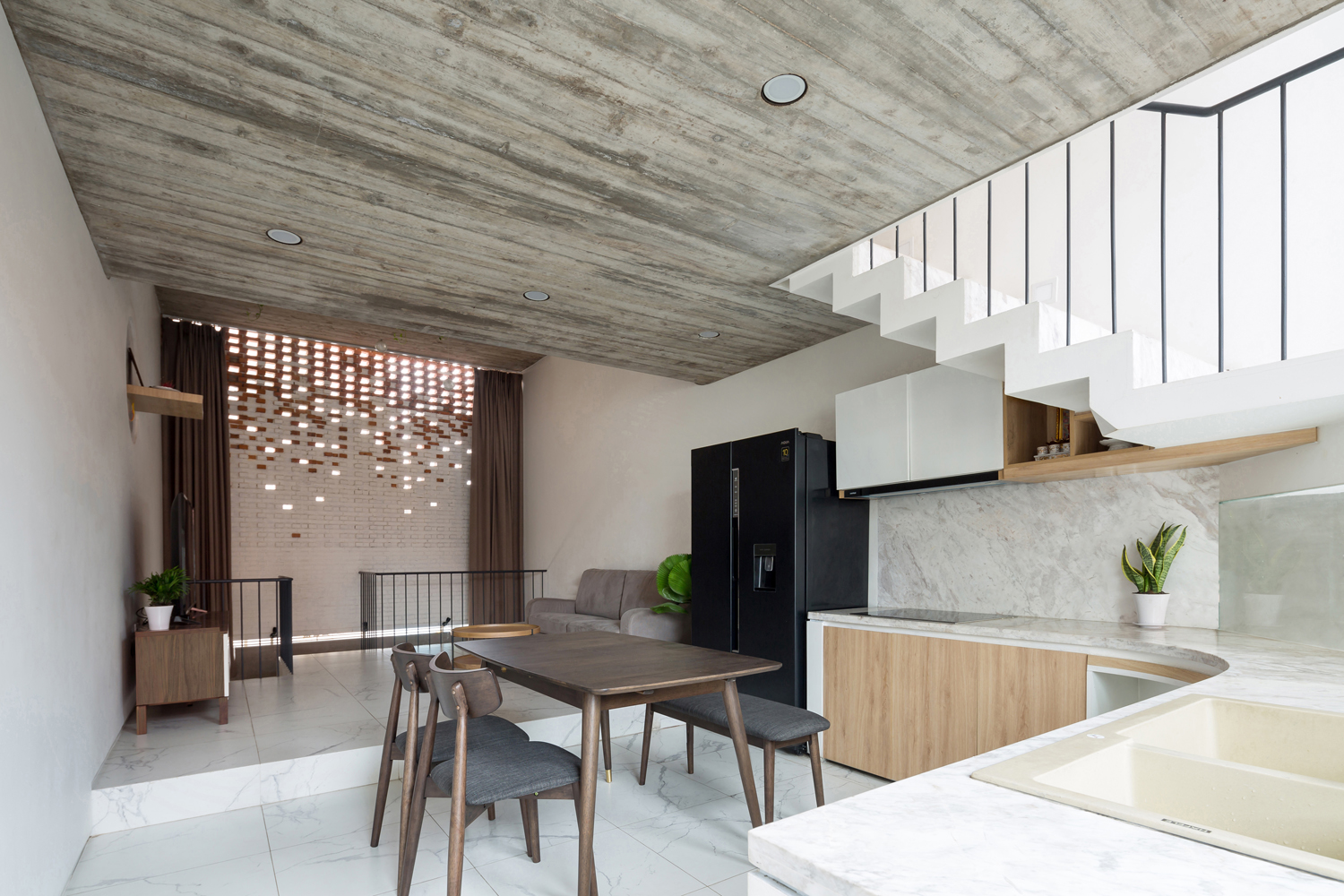
Fired bricks, a local material with flexibly forming ability, are used for the “curtain” of the facade. Its transition of colour and porosity describes the privacy level and intention of the spaces arranged behind, graded according to height and function of use. Within and out with interaction gradually diminishes by the top floors, where locates the newlyweds' private bedroom and the graphic artist's creative workspace requiring highly concentration.
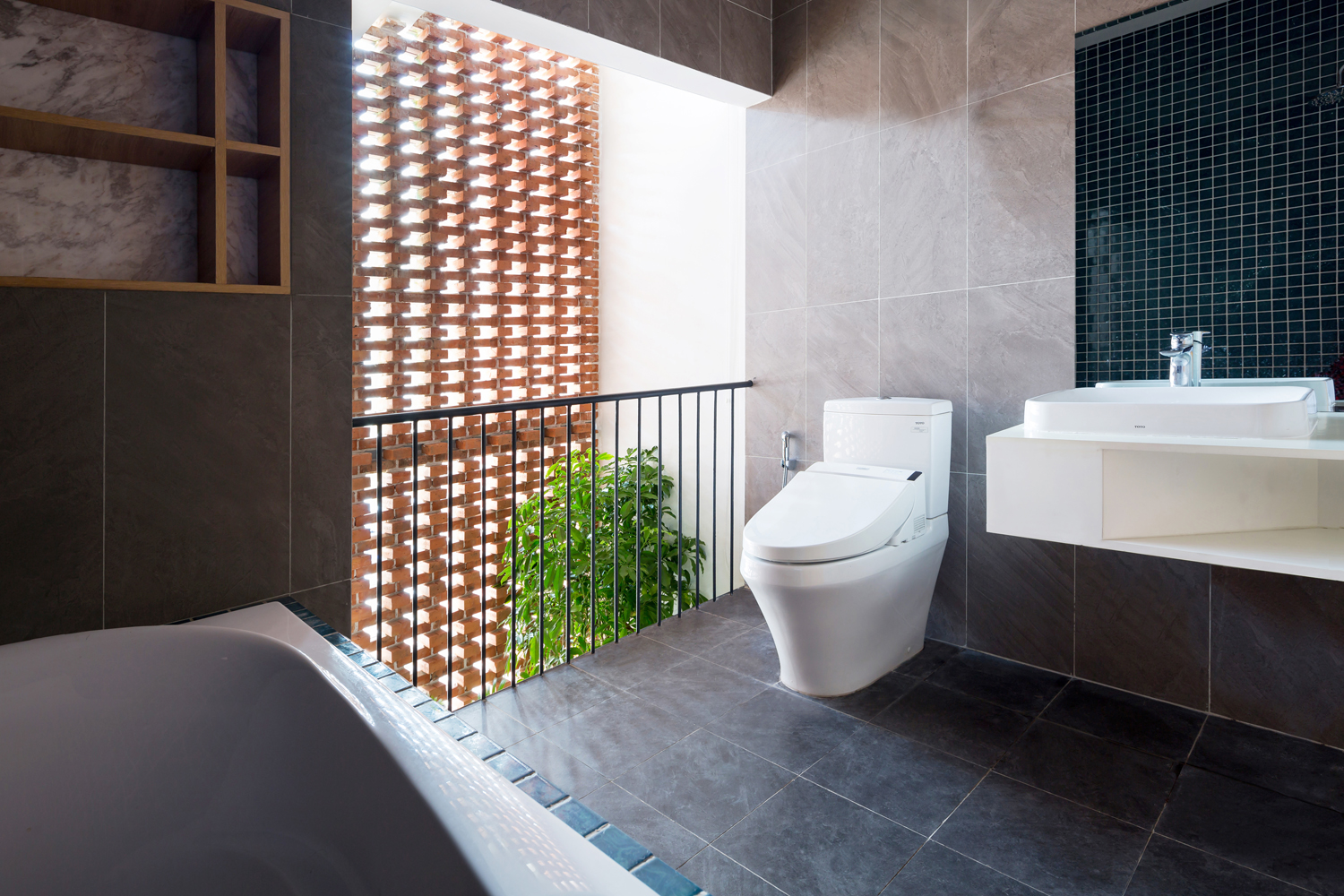
While the vertical boundary is a way of communicating between the building and context, the horizontal one is considered as that among the inner spaces. Through the diversity of height created by different slabs - replacing the continuous ones often found in typical tube houses – family members link would be risen. This, together with flexible stairs system which runs around the house, will reduce the awareness of each function room’s small area, also create a sweeping vision throughout spaces, helping to visualize a larger whole of them - in the limited construction area of 4x8 meters.











0개의 댓글
댓글 정렬